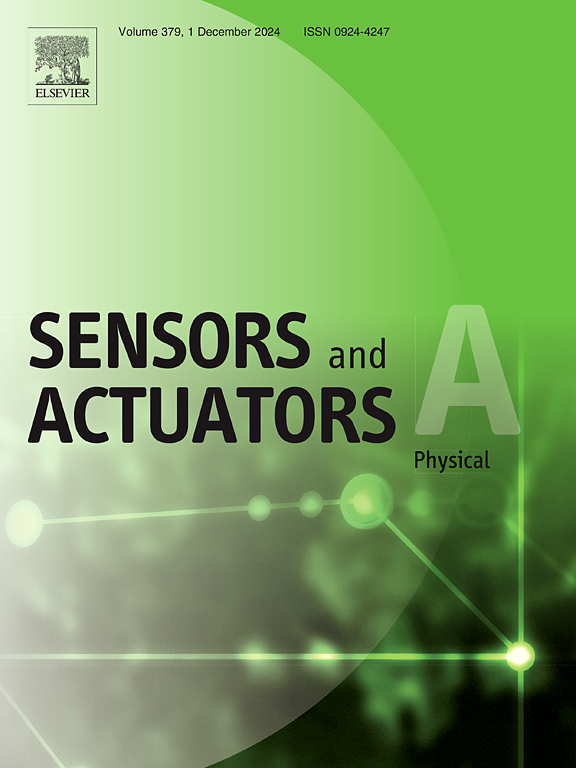pH-responsive polymer hydrogel nanocomposites for sensor applications: A review
IF 4.1
3区 工程技术
Q2 ENGINEERING, ELECTRICAL & ELECTRONIC
引用次数: 0
Abstract
pH-sensitive polymer hydrogel nanocomposites have been a promising class of material for sensor technologies due to their excellent sensitivity, tunability, and flexibility. Very useful for monitoring environmental and biological pH variations, pH-sensitive smart hydrogels contain ionizable functional groups whose structural and physicochemical properties alter in response to alterations in pH. The incorporation of nanomaterials like graphene, metal nanoparticles, carbon nanotubes, and silica enhances their mechanical properties, conductivity, and stability, thus widening their potential applications. Advances in fabrication methods such as in-situ polymerization, chemical crosslinking, and layer-by-layer assembly have assisted in the synthesis of highly effective and durable sensor materials. These sensor devices based on nanocomposite materials are broadly used in biomedical applications such as wound sensing, drug delivery systems, and wearable health diagnostic applications, and also in environmental applications to determine water quality and soil condition. Despite its advantages, there still exist challenges such as response time, biocompatibility, and mass production. Future research should aim at improving material compositions, increasing biodegradability, and introducing multifunctional features into future-generation smart sensing technologies. Highlighting its ability to revolutionize numerous disciplines, this article presents an extensive review of the structure, composition, manufacturing, and useful applications of pH-responsive polymer hydrogel nanocomposites in sensor technology.
ph响应聚合物水凝胶纳米复合材料在传感器中的应用:综述
ph敏感聚合物水凝胶纳米复合材料由于其优异的灵敏度、可调性和柔韧性,已成为传感器技术中很有前途的一类材料。pH敏感型智能水凝胶对于监测环境和生物pH变化非常有用,它含有可电离的官能团,其结构和物理化学性质会随着pH的变化而改变。石墨烯、金属纳米颗粒、碳纳米管和二氧化硅等纳米材料的掺入增强了它们的机械性能、导电性和稳定性,从而扩大了它们的潜在应用。原位聚合、化学交联和逐层组装等制造方法的进步有助于合成高效耐用的传感器材料。这些基于纳米复合材料的传感器设备广泛应用于生物医学应用,如伤口传感、药物输送系统和可穿戴健康诊断应用,以及环境应用,以确定水质和土壤条件。尽管具有优势,但仍存在反应时间、生物相容性和批量生产等方面的挑战。未来的研究应着眼于改善材料组成,提高生物降解性,并在下一代智能传感技术中引入多功能特征。本文着重介绍了ph响应聚合物水凝胶纳米复合材料在传感器技术中的结构、组成、制造和有用应用。
本文章由计算机程序翻译,如有差异,请以英文原文为准。
求助全文
约1分钟内获得全文
求助全文
来源期刊

Sensors and Actuators A-physical
工程技术-工程:电子与电气
CiteScore
8.10
自引率
6.50%
发文量
630
审稿时长
49 days
期刊介绍:
Sensors and Actuators A: Physical brings together multidisciplinary interests in one journal entirely devoted to disseminating information on all aspects of research and development of solid-state devices for transducing physical signals. Sensors and Actuators A: Physical regularly publishes original papers, letters to the Editors and from time to time invited review articles within the following device areas:
• Fundamentals and Physics, such as: classification of effects, physical effects, measurement theory, modelling of sensors, measurement standards, measurement errors, units and constants, time and frequency measurement. Modeling papers should bring new modeling techniques to the field and be supported by experimental results.
• Materials and their Processing, such as: piezoelectric materials, polymers, metal oxides, III-V and II-VI semiconductors, thick and thin films, optical glass fibres, amorphous, polycrystalline and monocrystalline silicon.
• Optoelectronic sensors, such as: photovoltaic diodes, photoconductors, photodiodes, phototransistors, positron-sensitive photodetectors, optoisolators, photodiode arrays, charge-coupled devices, light-emitting diodes, injection lasers and liquid-crystal displays.
• Mechanical sensors, such as: metallic, thin-film and semiconductor strain gauges, diffused silicon pressure sensors, silicon accelerometers, solid-state displacement transducers, piezo junction devices, piezoelectric field-effect transducers (PiFETs), tunnel-diode strain sensors, surface acoustic wave devices, silicon micromechanical switches, solid-state flow meters and electronic flow controllers.
Etc...
 求助内容:
求助内容: 应助结果提醒方式:
应助结果提醒方式:


